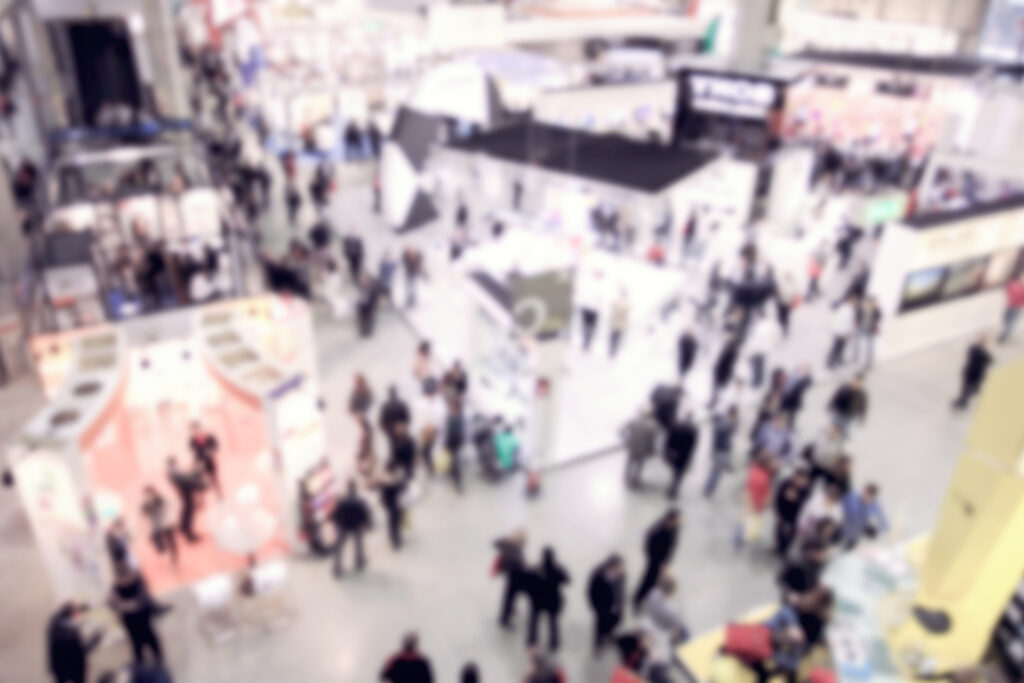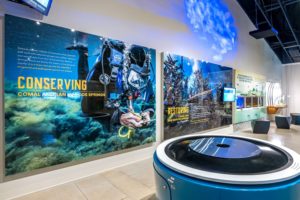We know that trade shows are big business. As discussed in the first part of this ongoing series, Trade Show 101 | Welcome to the Invisible Industry, the world of exhibitions accounts for millions of jobs and billions in revenue every year. From global shows, such as the International Consumer Electronics Show (CES), to smaller regional gatherings, companies far and wide participate in the industry. But what truly separates CES from a regional trade show in a hotel ballroom or even the Dubai Air Show?
Let’s take a closer look at the variety of exhibitions you may come across.
Types
Trade Show: a gathering where companies in a specific industry showcase their latest products and services. Trade shows are typically business-to-business and have a professional, industry-specific focus. Trade shows are specific to those in that particular industry and often carry higher costs. The terms trade fairs and trade expos are commonly used outside the United States to describe the same type of event.
Consumer Show: a gathering similar to a trade show but focused more on business-to-consumer commerce. At a consumer show, you’ll find a wide range of exhibitors, some even selling directly to customers on the show floor. These events are often free of charge and open to the public. The term consumer fair is commonly used in other parts of the world.
Conference: a gathering of people focused on a specific industry (or audience), featuring a variety of learning sessions, discussions, speakers, activities, meetings, and sometimes a trade show. These large events are typically held over multiple days. Conferences generally require participation fees and advanced registration. They are typically exclusive to those in that particular industry.
Symposium: a smaller gathering of people focused on a specific industry, segment, or topic, designed to facilitate an ongoing exchange of ideas, hands-on workshops, and greater networking opportunities. These can range from a single-day event to multiple days. Symposiums typically require registration, are exclusive to those in a particular industry, and often include official representatives and governing bodies.
Festival: a public event usually celebrated on a regional or local level, which includes entertainment, food, demonstrations, contests, and local traditions. Festivals tend to carry more cultural or religious significance than other types of events. During a festival, attendees can sometimes find exhibitors and other vendors trying to reach attendees with their products and services.
While on the topic of festivals, these events have led to festivalization within the exhibition industry. Festivalization is a growing trend fueled by experiential marketing, which expands the event well beyond a single venue and purpose. Some have become more like regional events, lasting from a few days to several weeks. CES, SEMA, SXSW, and DreamForce are great examples of festivalization. As this trend continues to grow, it provides amazingly creative experiences and endless opportunities to connect, learn, and grow.
Road Show: exhibits or experiences that travel between locations. Road shows typically utilize tractor-trailers or recreational vehicles to reach audiences where they are. This business-to-consumer approach provides a smaller, more intimate setting for attendees. Road shows may sometimes be called mobile tours.
Settings
Now that we understand the different types of events, it’s important to understand the potential settings of these gatherings.
Where can you find them?
Short answer: everywhere!
From trade shows to symposiums to festivals, experiential marketing events can take on an even wider range than the types of events we just discussed. When considering that the exhibition industry is global, these events can welcome an international, national, or even regional presence. From CES to your local Chamber of Commerce event, attendees can come from all nationalities, ethnicities, backgrounds, and more.
Because of the nature of the industry, it’s obvious that shows can be hosted in a variety of settings. From inside the halls of convention centers to even outside venues or a hybrid of the two, exhibitions come in all shapes, sizes, and places.
Entire infrastructures have been built to support the exhibition and experiential marketing industry. Las Vegas, Chicago, and Orlando first come to mind. They are home to some of the largest convention centers in the world. These cities offer not only world-class convention centers but also massive hotels and resorts that can house equally large events. But from booming metropolises to small towns across the globe, events can be hosted in nearly every corner of the world. Even fairgrounds and airports can get in on the action, welcoming exhibitors and attendees year-round.
Whether attending a trade show at McCormick Place in Chicago or a local fairground festival, these gatherings fuel the billion-dollar world of exhibitions. The next time you attend an event, look around and observe the “Invisible Industry” in action.
It’s more present than you think.









